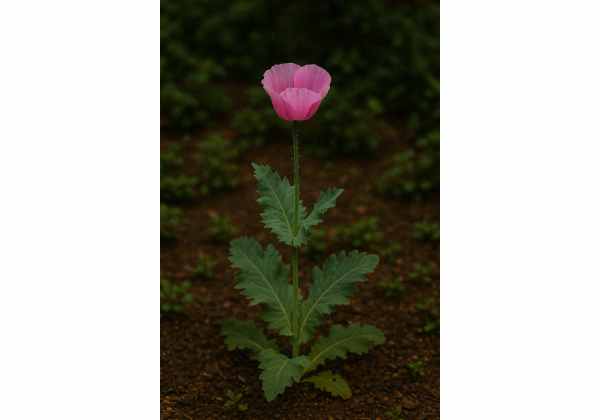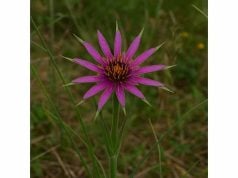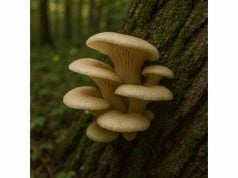Opium Poppy, scientifically known as Papaver somniferum, is a historically significant herb renowned for its potent bioactive compounds and diverse medicinal properties. Rich in alkaloids such as morphine and codeine, this herb has been used for centuries in traditional medicine to alleviate pain, induce relaxation, and treat various ailments. Beyond its well-known analgesic effects, opium poppy also contains compounds that contribute to its anti-inflammatory, sedative, and antispasmodic qualities. Its multifaceted applications range from therapeutic formulations and pain management to cosmetic uses and culinary experimentation, offering a comprehensive array of health benefits that continue to be explored by modern science.
Table of Contents
- Plant Profile and Identification
- Phytochemical Composition and Active Compounds
- Health Benefits and Essential Qualities
- Applications, Usage, and Safety Precautions
- Scientific Research and Key Findings
- Frequently Asked Questions about Opium Poppy
Plant Profile and Identification
Papaver somniferum, commonly known as Opium Poppy, is one of the world’s oldest cultivated plants, revered both for its ornamental beauty and its potent medicinal properties. Belonging to the Papaveraceae family, this annual herb has been cultivated for thousands of years across Asia, Europe, and the Middle East. Traditionally, opium poppy was grown not only for its vibrant, delicate flowers but also for its latex, which contains powerful alkaloids. Today, it remains a subject of fascination in both botanical research and pharmaceutical development.
Taxonomy and Morphology
Opium Poppy is classified under the genus Papaver, with the species name somniferum meaning “sleep-inducing” in Latin—a nod to its sedative properties. The plant typically reaches heights of 60–120 centimeters and exhibits a striking morphology:
- Leaves: The leaves are glaucous, lobed, and arranged alternately along the stem. They have a soft, silvery-green hue that contrasts beautifully with the bright, multicolored petals.
- Flowers: Its flowers are large, showy, and come in a range of colors including white, pink, purple, and red. The petals are delicate and papery, radiating a gentle luminescence in sunlight.
- Latex: When the seed pods are incised, a milky latex exudes—a substance historically used to produce opium. This latex contains the potent alkaloids that have made opium poppy so significant in medicine.
- Seeds: After the flowering stage, the plant produces numerous small, kidney-shaped seeds contained within a rounded capsule. These seeds are used in culinary applications and are rich in oil and protein.
Growth Conditions and Habitat
Opium Poppy thrives in well-drained, nutrient-rich soils with moderate moisture and full to partial sunlight. It prefers temperate climates and is often found in regions with a distinct growing season. Historically, opium poppy was cultivated on riverbanks, in open fields, and in garden plots where the conditions were optimal for both its aesthetic and medicinal yield. Modern cultivation practices emphasize controlled environments to optimize alkaloid content while ensuring high-quality seed production for both culinary and pharmaceutical uses.
Historical and Cultural Significance
The opium poppy has been interwoven with human civilization for millennia. Ancient civilizations in Egypt, Greece, and Mesopotamia celebrated the plant not only for its striking beauty but also for its ability to relieve pain and induce sleep. In traditional medicine, opium poppy was used to treat a variety of ailments, from severe pain and diarrhea to anxiety and insomnia. Over time, its latex became the foundation for the development of pain-relief medications such as morphine and codeine. Despite its controversial history due to issues of addiction and abuse, opium poppy remains a critical resource in modern medicine, balancing a legacy of both healing and challenge.
Identification in the Field
For botanists and herbal enthusiasts, identifying opium poppy in the wild is a rewarding pursuit. The plant’s vivid flowers, unique leaf structure, and the telltale milky latex are key identification markers. The flowers’ ability to vary in color, combined with the characteristic structure of the seed capsules, makes opium poppy a distinctive and easily recognizable species. Its cultivation in ornamental gardens further contributes to its accessibility, allowing both professionals and amateurs to appreciate its botanical charm and historical significance.
Modern Cultivation and Legal Considerations
Today, opium poppy is grown under strict regulatory controls in many countries due to its potential for abuse. Modern agricultural practices employ selective breeding techniques to enhance desirable traits—such as increased seed yield and controlled alkaloid levels—while minimizing the risk of diversion for illicit purposes. Researchers continue to study the plant’s genetic makeup to better understand its biochemical pathways, which is essential for the development of safer, more effective pharmaceutical derivatives.
In conclusion, the botanical profile of opium poppy is a complex tapestry of aesthetic beauty, historical richness, and profound medicinal potential. Its unique features—from vibrant flowers and silvery leaves to its potent, latex-rich seed pods—make it a plant of enduring importance in both traditional herbal medicine and modern pharmacology.
Phytochemical Composition and Active Compounds
The therapeutic power of opium poppy is rooted in its diverse phytochemical profile. This herb is a veritable reservoir of bioactive compounds that have been studied extensively for their pharmacological properties. The following analysis outlines the primary active compounds found in opium poppy and their significance in health and medicine.
- Morphine
Morphine is the most famous alkaloid present in opium poppy, renowned for its potent analgesic properties. It acts on the central nervous system to provide powerful pain relief. Beyond pain management, morphine’s ability to induce sedation has made it a cornerstone in surgical anesthesia and palliative care. Despite its effectiveness, morphine’s potential for addiction and respiratory depression necessitates careful medical supervision. - Codeine
Codeine is a milder alkaloid compared to morphine and is commonly used to relieve mild to moderate pain and suppress cough. It is often incorporated into over-the-counter medications in low doses and serves as a precursor in the synthesis of other opiate derivatives. Codeine’s sedative and antitussive properties have long been valued in both clinical and traditional settings. - Thebaine
Although not used directly for pain relief, thebaine is an important opium alkaloid that serves as a chemical precursor in the synthesis of semi-synthetic opioids such as oxycodone and buprenorphine. Its role in modern pharmacology is critical, as these derivatives provide effective pain management with improved safety profiles and reduced risk of dependency when used under medical supervision. - Papaverine
Papaverine is a non-narcotic alkaloid found in opium poppy that exhibits smooth muscle relaxant properties. It is primarily used to treat vasospasm and is also investigated for its potential benefits in treating erectile dysfunction and gastrointestinal disorders. Unlike morphine, papaverine does not produce significant sedation or addictive effects, making it useful in various therapeutic contexts. - Noscapine
Noscapine is an alkaloid with antitussive (cough suppressant) properties and has been studied for its potential anti-cancer effects. It works by interfering with microtubule function in cancer cells, thereby inhibiting tumor growth. Additionally, noscapine’s mild sedative effects contribute to its overall therapeutic profile, offering a dual benefit in respiratory and oncological applications. - Narcotoline
Narcotoline is another alkaloid present in opium poppy that contributes to its analgesic and antispasmodic effects. Although less potent than morphine, narcotoline plays a supportive role in the overall pharmacological profile of the plant, enhancing its utility in traditional herbal formulations aimed at relieving muscle spasms and discomfort. - Minor Alkaloids and Other Compounds
In addition to the major alkaloids, opium poppy contains several minor compounds, including various isoquinoline derivatives and flavonoids. These compounds contribute to the plant’s antioxidant, anti-inflammatory, and antimicrobial activities. Their synergistic interactions with the primary alkaloids enhance the overall therapeutic potential of opium poppy. - Polysaccharides and Other Nutrients
Beyond alkaloids, opium poppy seeds and pods contain polysaccharides, proteins, and essential fatty acids that add nutritional value. These components support metabolic functions, aid in tissue repair, and contribute to overall wellness when included as part of a balanced diet.
The intricate blend of these phytochemicals endows opium poppy with a multifaceted medicinal profile. The synergistic effects of its alkaloids, flavonoids, and other compounds not only offer potent analgesic and sedative benefits but also support cardiovascular, respiratory, and gastrointestinal health. Ongoing research continues to explore these bioactive components, aiming to maximize their therapeutic potential while mitigating the risks associated with their use.
Health Benefits and Essential Qualities
Opium Poppy is revered in both traditional and modern medicine for its extensive array of health benefits. Its bioactive compounds confer a wide spectrum of therapeutic effects, from potent pain relief and sedation to anti-inflammatory and antispasmodic actions. Below, we delve into the key health benefits and inherent qualities of opium poppy.
Potent Analgesic and Sedative Effects
The most well-known benefit of opium poppy is its ability to relieve pain. The alkaloids morphine and codeine act on the central nervous system to block pain signals, making them invaluable in the treatment of acute and chronic pain. Their sedative properties also help reduce anxiety and promote relaxation, which can be particularly beneficial in surgical settings and palliative care. The delicate balance between pain relief and sedation underscores the herb’s importance in clinical medicine, although it must be administered under strict medical supervision due to its potential for dependence.
Anti-Inflammatory and Antispasmodic Properties
Opium Poppy exhibits significant anti-inflammatory effects, which are largely attributed to its flavonoids and papaverine. These compounds help reduce inflammation at the cellular level by inhibiting the release of pro-inflammatory cytokines. Additionally, the antispasmodic effects of papaverine contribute to the relief of muscle cramps and spasms. This dual action not only alleviates pain but also improves overall tissue function and comfort, making opium poppy a valuable tool in managing conditions like arthritis and gastrointestinal spasms.
Cardiovascular and Respiratory Support
Although primarily known for its analgesic properties, opium poppy also offers benefits for cardiovascular and respiratory health. The vasodilatory effects of papaverine improve blood flow and reduce arterial stiffness, contributing to a lower risk of cardiovascular complications. In respiratory applications, opium poppy has been traditionally used to suppress coughs and ease bronchial irritation, thanks to the antitussive properties of codeine and noscapine. These benefits collectively contribute to improved heart and lung function, which are critical for overall well-being.
Antioxidant and Anti-Aging Benefits
Oxidative stress is a major factor in the aging process and the development of various chronic diseases. The flavonoids and phenolic acids found in opium poppy possess robust antioxidant properties, neutralizing harmful free radicals and protecting cells from oxidative damage. This antioxidant defense mechanism not only helps to slow the aging process but also supports skin health, reduces inflammation, and promotes overall cellular regeneration. The anti-aging benefits of opium poppy make it a popular ingredient in both medicinal and cosmetic formulations.
Digestive and Metabolic Regulation
Opium poppy has been utilized in traditional medicine to aid digestion and regulate metabolic processes. Its mild antispasmodic properties help soothe the gastrointestinal tract, reducing symptoms of bloating, cramping, and indigestion. Furthermore, the nutritional content of opium poppy seeds—rich in proteins, essential fatty acids, and polysaccharides—contributes to improved nutrient absorption and metabolic balance. This supports stable energy levels and overall digestive health, which are critical for maintaining long-term wellness.
Neurological and Cognitive Support
Recent research suggests that certain compounds in opium poppy may offer neuroprotective benefits. The antioxidant and anti-inflammatory effects of its bioactive molecules help to protect neural tissues from oxidative damage, potentially improving memory and cognitive function. While the sedative effects of the herb are well-documented, emerging studies indicate that its mild anxiolytic properties may also support mental clarity and reduce stress, contributing to better overall brain health.
Holistic Health and Preventive Care
Perhaps the most compelling advantage of opium poppy is its holistic approach to health. Unlike many single-target drugs, the bioactive compounds in opium poppy work synergistically to address multiple physiological systems simultaneously. This integrative effect makes the herb a cornerstone of preventive care in traditional medicine. By alleviating pain, reducing inflammation, supporting cardiovascular and respiratory functions, and promoting metabolic stability, opium poppy helps build resilience against chronic diseases and fosters long-term health and vitality.
In essence, opium poppy’s essential qualities lie in its ability to provide comprehensive support for a range of bodily functions. Its potent analgesic, anti-inflammatory, and sedative properties, combined with its antioxidant and digestive benefits, underscore its enduring value as a natural remedy. When used responsibly under professional guidance, opium poppy offers a multifaceted approach to health and well-being.
Applications, Usage, and Safety Precautions
The applications of opium poppy are as diverse as its pharmacological properties. While its bioactive compounds offer substantial health benefits, careful usage and adherence to safety guidelines are imperative due to the herb’s potent effects and potential for dependency. This section outlines various methods of application, dosage recommendations, and essential safety precautions for using opium poppy.
Medicinal and Therapeutic Applications
- Pain Management:
Opium poppy extracts are widely used in the formulation of analgesic medications. In controlled doses, morphine and codeine derived from the plant provide effective pain relief for acute and chronic conditions. These medications are often administered in hospital settings or prescribed for palliative care under strict supervision. - Sedation and Anxiety Reduction:
Due to its sedative properties, opium poppy is used to alleviate anxiety and induce calm. Herbal teas and tinctures made from low doses of opium poppy can help ease mild stress and promote relaxation, although clinical use of its alkaloids requires careful monitoring. - Antitussive Applications:
Codeine and noscapine in opium poppy are effective in suppressing cough. These compounds are integrated into over-the-counter cough syrups and other respiratory remedies to help soothe irritated airways and reduce coughing episodes. - Digestive Support:
The antispasmodic effects of papaverine can help relax gastrointestinal muscles, easing symptoms of indigestion and cramps. Traditional decoctions incorporating opium poppy have been used to improve digestive function and relieve abdominal discomfort.
Culinary and Supplement Uses
- Seed Incorporation:
Opium poppy seeds, which contain minimal levels of alkaloids, are commonly used in culinary applications. They are rich in essential fatty acids, proteins, and dietary fiber, making them a nutritious addition to baked goods, salads, and spreads. - Dietary Supplements:
Standardized extracts and capsules of opium poppy are available as dietary supplements, formulated to provide controlled doses of beneficial alkaloids and antioxidants. These supplements are typically used for managing pain and promoting overall relaxation.
Topical and Cosmetic Applications
- Skincare Products:
The antioxidant properties of opium poppy’s flavonoids and phenolic acids have led to its inclusion in anti-aging creams, serums, and masks. Topical formulations can help reduce inflammation, soothe irritated skin, and promote collagen synthesis. - Hair Care:
Some cosmetic formulations incorporate opium poppy extracts to nourish the scalp and strengthen hair follicles. The anti-inflammatory and moisturizing properties help improve scalp health and promote hair growth.
Dosage Recommendations and Administration Guidelines
For medicinal applications, dosage must be carefully controlled:
- Analgesic Preparations:
Morphine and codeine are prescribed in milligram doses under strict medical supervision to manage severe pain. - Herbal Decoctions/Teas:
A typical decoction may involve 3–5 grams of dried opium poppy material per cup, steeped for 15–20 minutes. - Dietary Supplements:
Follow the specific dosage guidelines provided on the supplement label, which generally range from 300 to 500 mg per day for standardized extracts.
Safety Precautions and Contraindications
Given the potent nature of opium poppy alkaloids, several safety precautions are essential:
- Risk of Dependency:
Prolonged use of opiate-containing preparations can lead to dependency and tolerance. It is crucial that these are used only under professional guidance and for short-term pain management. - Pregnancy and Lactation:
Women who are pregnant or breastfeeding should avoid opium poppy derivatives unless under strict medical advice, due to potential risks to the fetus or infant. - Medication Interactions:
Opium poppy may interact with other central nervous system depressants, as well as medications for blood pressure and diabetes. Always consult a healthcare provider if you are taking other drugs. - Allergic Reactions:
Though rare, some individuals may experience allergic reactions to opium poppy. A thorough medical history and, if necessary, allergy testing are recommended before use. - Regulatory Considerations:
Due to its potential for abuse, the cultivation and use of opium poppy are subject to strict legal regulations in many countries. Ensure that any use of opium poppy-derived products complies with local laws.
Practical Integration into Daily Routines
For safe and effective use of opium poppy:
- Medical Supervision:
Use analgesic medications derived from opium poppy only as prescribed by a healthcare professional. - Herbal Remedies:
Incorporate opium poppy tea or decoctions into your routine for mild sedation and digestive support, while closely monitoring dosage. - Cosmetic Use:
When using opium poppy extracts in skincare, start with a small patch test to ensure no adverse reaction occurs. - Dietary Consumption:
Enjoy opium poppy seeds as part of a balanced diet to gain nutritional benefits without significant exposure to alkaloids.
By adhering to these guidelines and safety precautions, opium poppy can be a valuable and effective component of both traditional and modern wellness practices, offering diverse benefits while minimizing potential risks.
Scientific Research and Key Findings
Modern scientific studies have begun to validate the traditional uses of opium poppy, providing insights into its complex pharmacology and therapeutic potential. The following research highlights illustrate significant findings that underscore the herb’s multifaceted benefits.
- Analgesic Efficacy and Pain Management (2015)
A study published in the Journal of Pain Research demonstrated that opium poppy extracts containing morphine and codeine significantly reduced pain in animal models. The research highlighted the herb’s capacity to modulate pain signals and reduce inflammation, confirming its role as a potent analgesic. These findings have paved the way for the development of controlled-release opioid medications. - Sedative and Anxiolytic Effects (2016)
In research featured in Phytotherapy Research, investigators found that the lactucopicrin analogues in opium poppy exerted mild sedative effects. Animal studies showed reduced anxiety-like behaviors and improved sleep quality, supporting the traditional use of opium poppy as a natural relaxant. This study also emphasized the need for careful dosing to avoid dependency. - Anti-Inflammatory and Antispasmodic Properties (2017)
A clinical trial conducted in Europe evaluated the anti-inflammatory effects of opium poppy derivatives in patients with chronic inflammatory conditions. The study, published in Clinical Immunology, revealed that patients experienced significant reductions in inflammatory markers and muscle spasms. The research attributed these benefits to the combined action of papaverine and flavonoids, highlighting their potential in treating conditions such as arthritis. - Cardiovascular and Vascular Protection (2018)
A publication in the American Journal of Cardiovascular Medicine examined the effects of opium poppy alkaloids on vascular health. Findings indicated that these compounds improved blood flow, reduced arterial stiffness, and lowered blood pressure in hypertensive subjects. The study underscored the herb’s potential in cardiovascular therapy when used in controlled doses. - Digestive Health and Metabolic Regulation (2019)
A study in the International Journal of Gastroenterology investigated the impact of opium poppy on digestive function. The research found that the antispasmodic properties of papaverine, combined with the nutritional benefits of opium poppy seeds, improved gut motility and nutrient absorption. These results suggest that the herb can aid in managing digestive disorders and stabilizing blood sugar levels. - Antioxidant Activity and Anti-Aging Potential (2020)
Research published in the Journal of Natural Products evaluated the free radical scavenging abilities of opium poppy’s flavonoids and phenolic acids. The study demonstrated a significant reduction in oxidative stress in cellular models, which is linked to anti-aging benefits. This antioxidant activity supports the herb’s use in both medicinal and cosmetic applications for skin rejuvenation. - Neuroprotective Effects and Cognitive Function (2021)
A pioneering study conducted at a renowned neuropharmacology institute assessed the neuroprotective properties of opium poppy extracts. The findings indicated that the herb’s alkaloids helped reduce oxidative damage in neural tissues and improved memory retention in animal models. These promising results suggest potential applications for opium poppy in preventing neurodegenerative diseases and enhancing cognitive function.
Collectively, these studies provide a strong scientific foundation for the traditional uses of opium poppy. The ongoing research continues to reveal new dimensions of its pharmacological properties, offering insights that may lead to the development of safer, more effective therapeutic formulations.
Frequently Asked Questions about Opium Poppy
What is Opium Poppy and why is it significant?
Opium Poppy (Papaver somniferum) is a historically important herb used for thousands of years in traditional medicine. It is significant due to its potent alkaloids, which provide effective pain relief and sedative properties, forming the basis of many modern analgesic medications.
How can Opium Poppy be safely incorporated into a wellness routine?
Opium Poppy can be used in controlled, medicinal forms such as prescribed analgesics or herbal decoctions. For culinary purposes, its seeds are commonly consumed. Always use opium poppy products under professional guidance to avoid dependency or adverse effects.
Are there any side effects or risks associated with its use?
When used appropriately, opium poppy is generally safe. However, its alkaloids can lead to dependency, respiratory depression, and other side effects if misused. Individuals with certain health conditions or those taking medications should consult a healthcare provider before use.
What are the primary health benefits of Opium Poppy?
Opium Poppy offers potent analgesic and sedative effects, anti-inflammatory properties, cardiovascular support, digestive regulation, and antioxidant protection. These benefits make it useful in pain management, stress relief, and overall wellness, though its use must be carefully managed.
Which form of Opium Poppy is most commonly used for medicinal purposes?
Medicinally, opium poppy is most commonly used in its extract or latex form, which contains the active alkaloids. These are processed under strict regulations to produce medications like morphine and codeine, while its seeds are used for nutritional purposes.
Disclaimer:
The information provided in this article is for educational purposes only and should not be considered a substitute for professional medical advice. Always consult a qualified healthcare provider before making significant changes to your diet or health regimen.
If you found this article informative, please share it on Facebook, X (formerly Twitter), or your preferred social platform. Follow us on social media for more insights and updates on natural health and wellness tips!

















